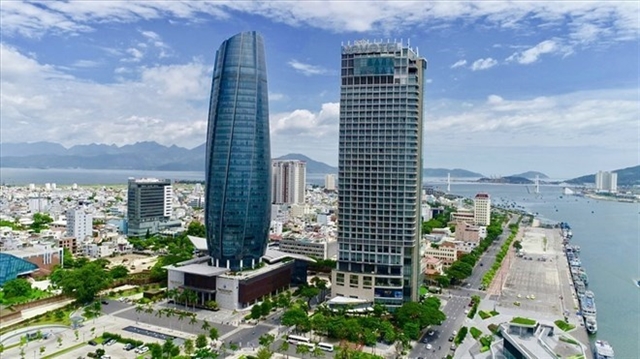 Economy
Economy

 |
| Gemalink international port in the Cái Mép–Thị Vải port cluster, near the Cái Mép Hạ area in the southern province of Bà Rịa–Vũng Tàu. — VNA/VNS Photo Hồng Đạ |
BÀ RỊA–VŨNG TÀU — Vice chair of the People’s Committee of Bà Rịa–Vũng Tàu Lê Ngọc Khánh said on Sunday that the southern province is capable of accommodating a free trade zone.
He was speaking at a workshop on the opportunities brought by free trade zones and ways to develop them held in Xuyên Mộc District by the Ministry of Industry and Trade.
Việt Nam currently has no free trade zones in operation except for a pilot model in Đà Nẵng, which was approved by the National Assembly and is expected to be completed next year.
Khánh said that after analysing the potential advantages of a free trade zone linked to seaports in Bà Rịa–Vũng Tàu, the province’s authorities realised the 1,000-hectare Cái Mép Hạ area met the necessary conditions to establish a free trade zone.
“Conducting thorough research for the development of the zone will be a key political task for the province’s authorities in the near future,” he said.
The economic benefits of free trade zones were also discussed at the workshop.
In the context of global economic integration, free trade zones have become an effective model for promoting import-export activities and developing logistics, experts said. They provide a flexible mechanism that allows businesses to benefit from tax exemptions, tax reductions and simplified administrative procedures.
This is especially important for Việt Nam, an economy heavily dependent on exports that is currently expanding its market through free trade agreements (FTAs) with many large global partners.
However, at the moment, Việt Nam’s legal system does not have regulations on the procedures, authority, decision-making processes, management models, operational mechanisms, or decentralised management in free trade zones, making it difficult to apply a unified approach.
In Bà Rịa-Vũng Tàu Province, Resolution 24 by the Politburo has set out a task for the local government to form a free trade zone associated with seaports in the Cái Mép Hạ area, and to continue to develop and modernise the Cái Mép–Thị Vải international gateway port into a large international transshipment port with regional and global significance. — VNS




